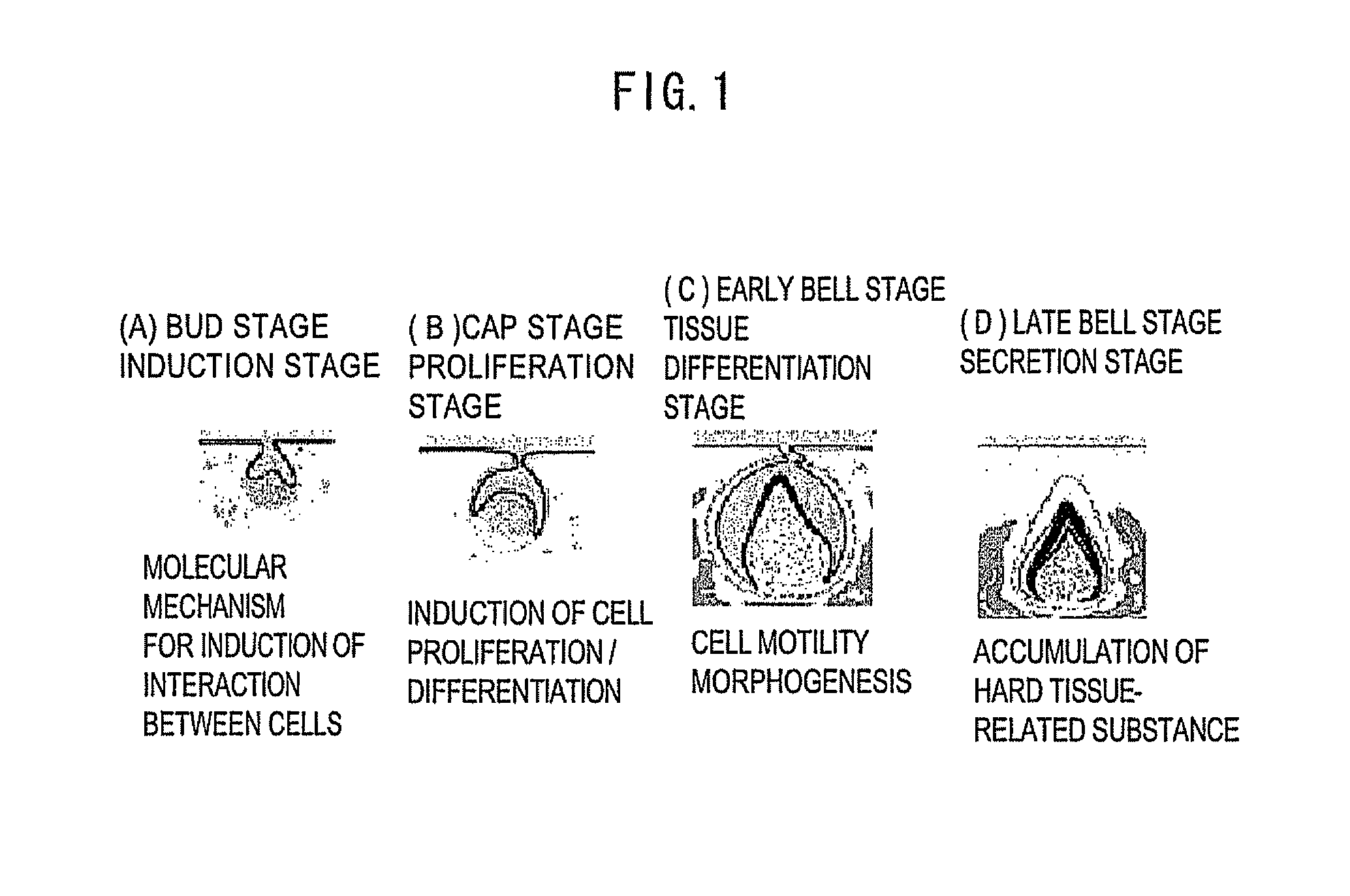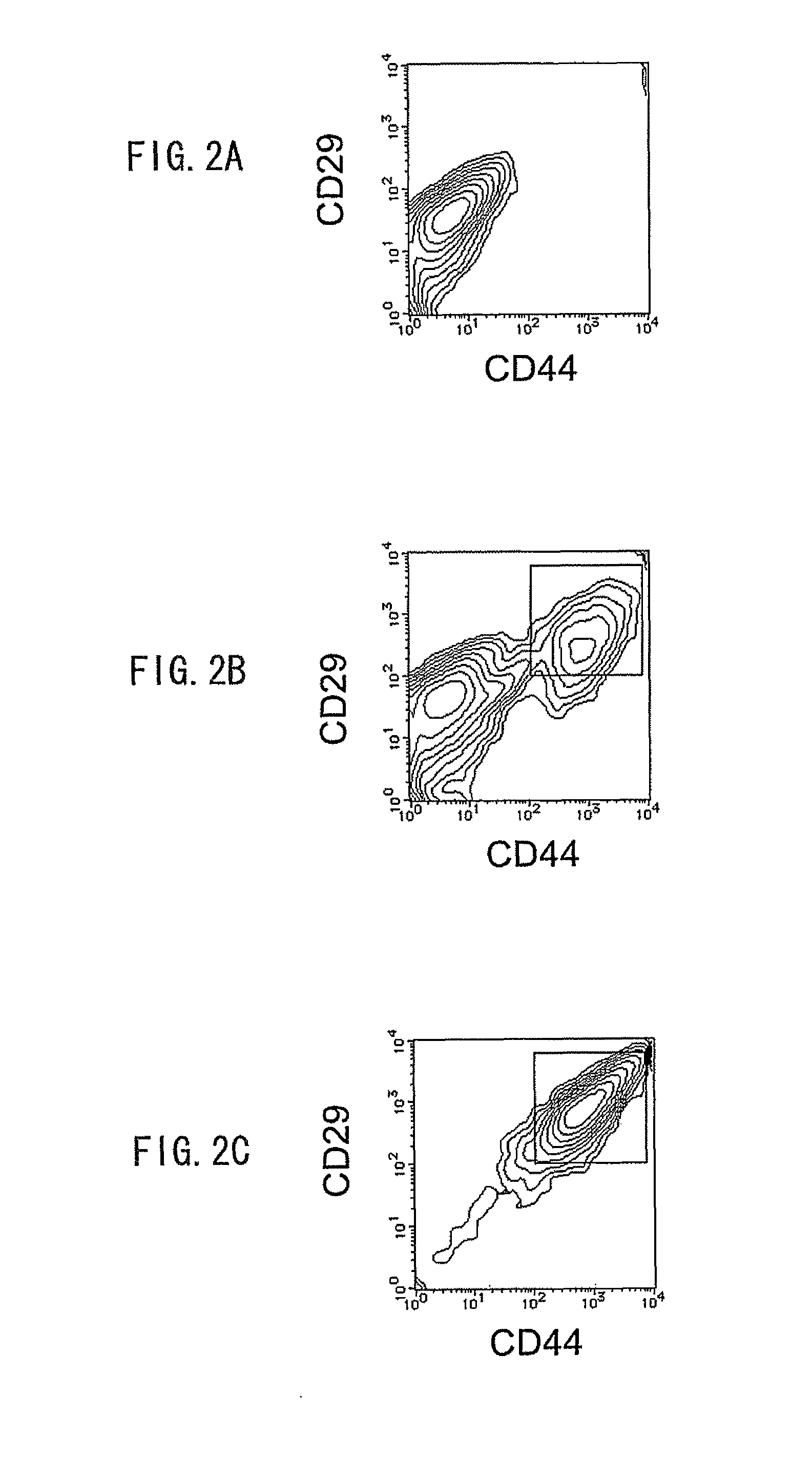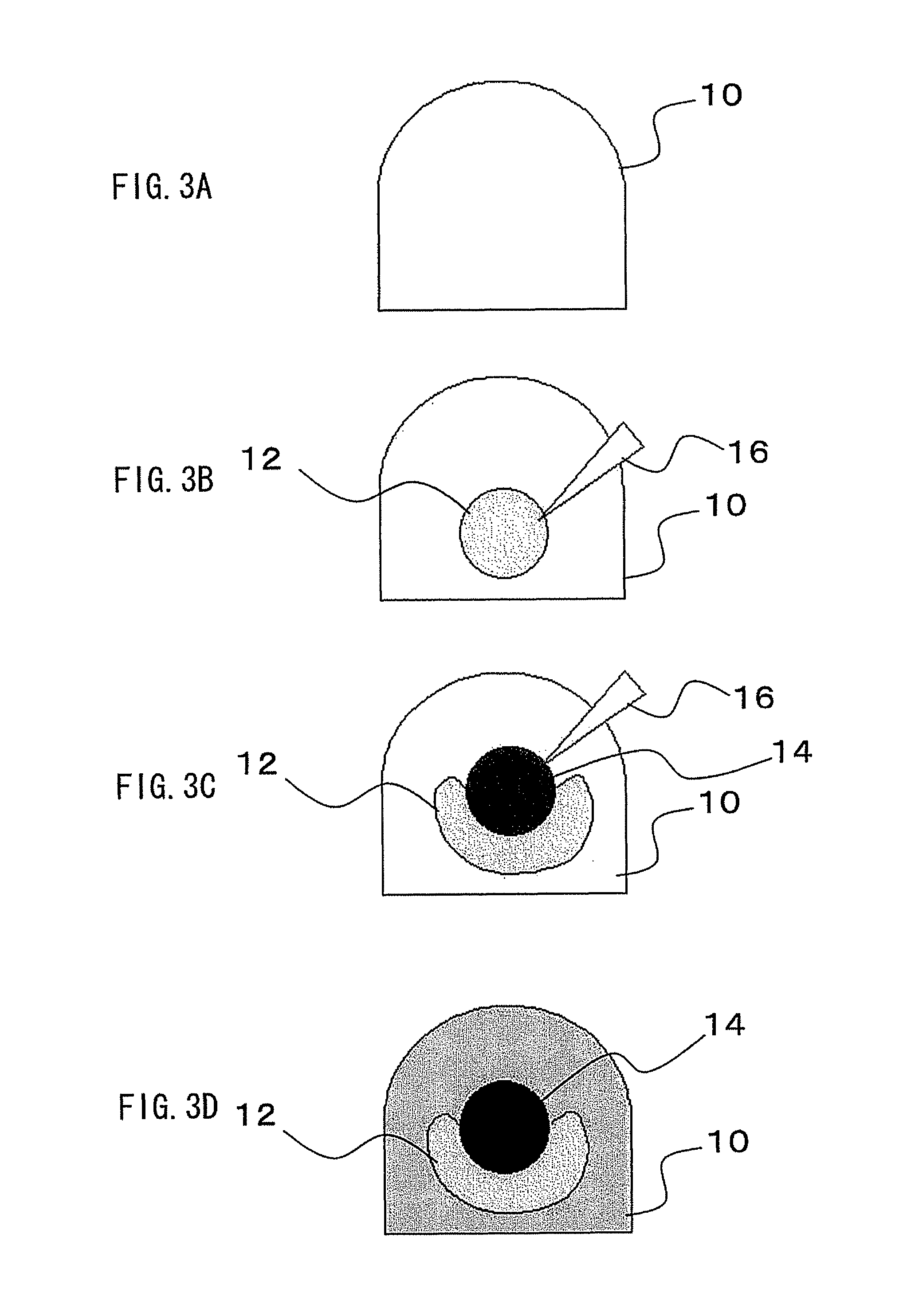Method for production of mesenchymal cell, method for production of tooth, and mesenchymal cell for formation of tooth
a mesenchymal cell and cell technology, applied in the field of mesenchymal cell production, method for producing tooth, can solve the problems of insufficient number of cells which can be obtained, and the inability to regenerate teeth solely by stem cell transplantation, etc., and achieve the effect of large amount and large amount of
- Summary
- Abstract
- Description
- Claims
- Application Information
AI Technical Summary
Benefits of technology
Problems solved by technology
Method used
Image
Examples
example 1
1. Method for Culturing EC Cells
[0122]As the EC cells, AT805 cells (a clone derived from OTT6050, EC cells of the strain129; obtained from the Cell Bank, RIKEN Bioresource Center) were used. Culturing of AT805 cells was performed using Dulbecco's modified Eagle's medium (DMEM; manufactured by SIGMA or Kohjin Bio Co. Ltd.) supplemented with 10% by volume fetal calf serum (FCS: manufactured by JRH, JBS or Hyclone) and 55 μM 2-mercaptoethanol (manufactured by GIBCO). EC cells were usually plated at a concentration of 5 to 8×105 cells per 100 mm dish, and complete replacement of the medium and passage culture were repeated every other day. In passage culture, the cells were washed once with HCMF buffer (pH7.4; 10 mM Hepes, 136.9 mM NaCl, 0.34 mM Na2HPO3, 13.9 mM glucose, 5.37 mM KCl), and 5 ml of an enzyme solution wherein trypsin-EDTA.2Na (manufactured by GIBCO) was dissolved at the final concentration of 0.025% was then added thereto, followed by an enzyme treatment at 37° C. for 1 mi...
example 2
Properties of DMSO-EC Cells
[0133](1) Phase Contrast Micrograph
[0134]Morphology of the above obtained clones 1 and 2 and morphology of EC cells, DMSO-EC cells, and ATDC5 cells (obtained from the Cell Bank, RIKEN Bioresource Center) which are EC cell-derived cartilage precursor cells were each observed under a phase-contrast microscope.
[0135]As a result, it was observed that EC cells in a colony were small and grew at a high density, and the fringe of the colony was raised, and therefore that these cells had a typical totipotent stem cell-like morphology. On the other hand, with regard to DMSO-EC cells, the clones 1 and 2 of DMSO-EC cells, and ATDC5 cells, the area of each cell constituting a colony was large, and the cells formed a monolayer characteristic to adhesive cells, therefore showing a morphology clearly different from the characteristic morphology of EC cells. Such morphology as adhesive cells is similar to that of mesenchymal cells rather than to that of EC cells.
[0136](2)...
example 3
Evaluation of Tooth-Forming Potential of Cells Whose Differentiation was Induced from Ec Cells
[0150]Differentiation potentials into odontoblast and tooth dentin-forming potentials of DMSO-EC cells and the cloned cells thereof obtained by the present invention were tested as follows.
[0151](1) Preparation of Tooth Germ Epithelial Tissue
[0152]From the embryo of a C57BL / 6 mouse (purchased from SLC) at the embryonic age of 14.5 days, a lower incisor tooth germ tissue was isolated by a conventional method under the microscope. The isolated lower incisor tooth germ tissue was washed with PBS(−), and treated with an enzyme solution supplemented with 1.2 U / ml (final concentration) Dispase II (Roche, Mannheim, Germany) at room temperature for 12.5 minutes, followed by 3 times of washing with DMEM (Sigma, St. Louis, Mo.) supplemented with 10% FCS (JRH Biosciences, Lenexa, Kans.). Subsequently, a DNase I solution (Takara, Siga, Japan) was added such that the final concentration of 70 U / ml is ac...
PUM
| Property | Measurement | Unit |
|---|---|---|
| time period | aaaaa | aaaaa |
| time period | aaaaa | aaaaa |
| diameter | aaaaa | aaaaa |
Abstract
Description
Claims
Application Information
 Login to View More
Login to View More - R&D
- Intellectual Property
- Life Sciences
- Materials
- Tech Scout
- Unparalleled Data Quality
- Higher Quality Content
- 60% Fewer Hallucinations
Browse by: Latest US Patents, China's latest patents, Technical Efficacy Thesaurus, Application Domain, Technology Topic, Popular Technical Reports.
© 2025 PatSnap. All rights reserved.Legal|Privacy policy|Modern Slavery Act Transparency Statement|Sitemap|About US| Contact US: help@patsnap.com



